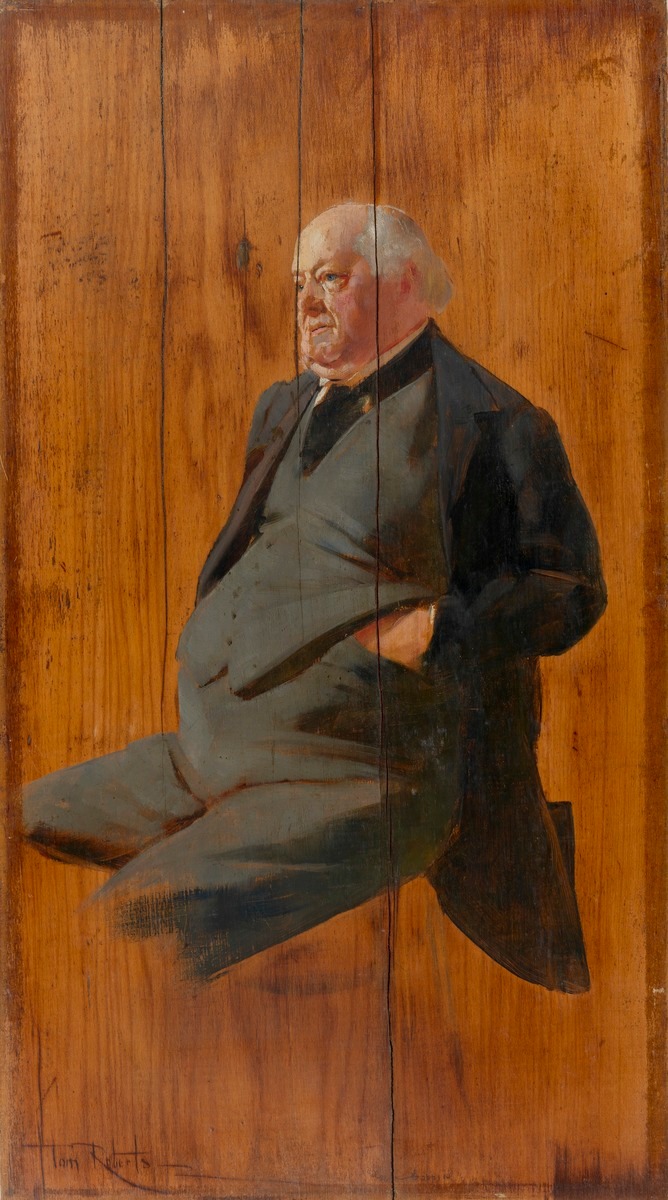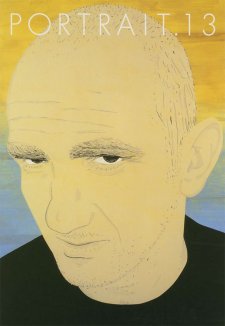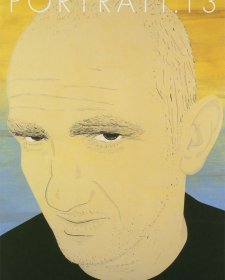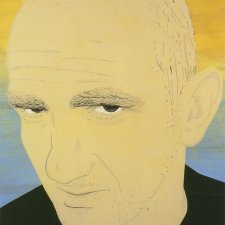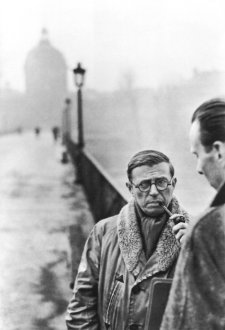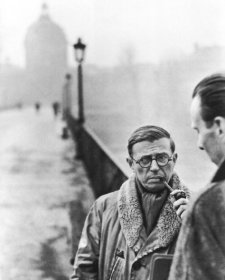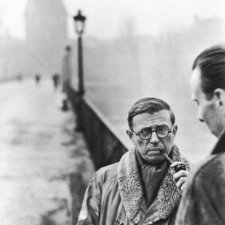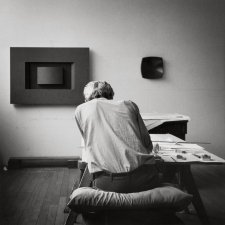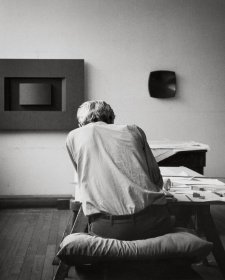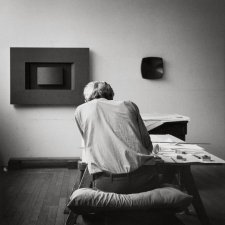George Selth Coppin (1819-1906) comedian, impresario and entrepreneur, was a driving force of the early Australian theatre. Coppin was born in Steyning, Sussex.
His father, George Coppin, a clergyman's son, had been indentured to a surgeon, but abandoned this unusual 'apprenticeship' to pursue an actress twice his age. They married, and he took to the life of an itinerant player himself. George Selth Coppin, their first son, was born on tour; he later said 'I was put on top of the props and at the tender age of one year I was carried on stage by my mother'. The family formed their own company, and by his early teens Coppin had been introduced to the kinds of roles for which he later became famous: Jem Bags, a vagabond fiddler; Paul Pry, a meddlesome snoop whose opening words, 'I hope I don't intrude', brought the house down well into Coppin's eighties; and Billy Barlow, whose risqué sung doggerel was to be adapted to suit countless new audiences in new towns over many decades.
In 1835 the Coppins's strolling company went broke and George sought his future independently, initially making just enough to eat by husking in front of country houses and walking many miles most days to find supper and a bed. At 17, he secured his first job in theatre management outside London. After some years he found his way to Dublin, where he appeared with Monsieur Gouffe the man-monkey (previously known to Coppin as Mr Wilson the equilibrist) in an act that teamed Coppin as Fabrioletta Dunderhead with Gouffe's Jocko the Island Ape. While playing Sam Snaffle at the Abbey Street Theatre he was captivated by an actress nine years older than himself, Mrs Maria Watkins Burroughs; they entered into a stage and domestic partnership that lasted until she died.
Coppin favoured emigration to Australia, but Maria had grown up in America, and wanted to return there. A coin toss decided the matter 'fortunately for the Colonies and myself' as he was later to put it. They sailed on the Al rated ship the Templar in November 1842; after a break at Cape Town, when the couple earned a welcome five guineas for performing, they arrived in Sydney in March 1843. Within a fortnight, thanks to Coppin's incredible enterprise and audacity, they had captivated the city. Their immense popularity enabled Coppin to buy the lease of the Clown Tavern in Pitt Street, but the venture failed, and 11 months after the first of his numerous 'retirements' from the stage in 1843 he was advertising the Clown for sale. He paid off his debts in late 1844, and the pair opened in Hobart Town early in 1845. Seasons in Launceston and Melbourne followed before Coppin established the New Queen's Theatre in Adelaide in 1846. By 1848, the year Maria died, he owned the Auction Mart Tavern and some racehorses, and his theatrical and hotel holdings in South Australia increased through the next few years.
In 1851, the year the gold rush began in New South Wales and then Victoria, Coppin lost his fortune investing in copper. He returned to the boards, and by 1854 he was able to engage the famous Irish Shakespearean actor and tragedian Gustavus Vaughan Brooke, whom he knew from Dublin, to appear in his Queen's Theatre and then tour Victoria and New South Wales. In February 1856 the fiery Irish dancer Lola Montez opened at Ballarat. Famous for her eccentrically erotic 'spider dance', she tempted miners to shower nuggets at her feet as she performed, but within weeks she horsewhipped the editor of the Ballarat Times for making too much of her adventurous background. A contemporaneous vignette of Coppin and Brooke is provided in a memoir by Celeste de Chabrillan, herself a one-time Paris whore, bareback rider and polka dancer but by then the wife of the first French consular agent in Melbourne. The de Chabrillans went to see Richelieu, played by GV Brooke, and although 'the seams of his stockings were twisted like a corkscrew from his heels to his knees' she found him 'really remarkable'. His performance was followed by Coppin's (de Chabrillan calls him 'Copping'):
Copping is a fat man, with a belly like a Chinese figurine. He sometimes slaps his stomach as if he were playing a bass drum, which makes the audience roar with laughter. He jumps, turns somersaults, throws punches, gets kicked. The audience adores him and they applaud with all their might. In the intervals he goes down to the bar ... He keeps his stage costume on while serving his customers. He's director, artist, wine merchant and waiter all in one. He parodies everyone. He does a caricature of Brooke as his main subject, and has just composed a ballet based on LolaMontez -the spider dance. He is dressed as cupid, onlyhis gauze skirt sits bunched up on his hips like a baker'ssmock. On his head is a garland of white roses. Heblows kisses to the audience, then after much prancingabout that makes them die laughing, he throws astuffed rat on the ground and jumps on it with bothfeet ... He mops his brow, comes forward to make aspeech, simpering and imitating Lola's voice exactly ...They shout: Encore! He blows more kisses and ...[puffs] like a grampus ... They say that Lola had wantedto horsewhip Copping, but that she had changed hermind once she laid eyes on this colossus who waspreparing to receive her with a birch.
Coppin built up a portfolio of theatres and hotels with Brooke in a partnership that was to last on and off until 1861, by which time audiences had tired of Brooke's 'nauseous iteration' of farewell performances. Harriet Hilsden, Brooke's sister-in-law, became Coppin's first legal wife in 1855; his second was to be Lucy Hilsden, Harriet's daughter, whom he married six years later. Brooke had thoroughly gone to seed when Coppin engaged him to return from England for another season in 1866, but he perished in heroic circumstances when his ship foundered six days after leaving Plymouth.
The goldrush years of the 1850s also saw the beginning of self-government in Victoria. Its constitution was enacted in London in 1855, and a Parliament was formed with two chambers: a Legislative Assembly, consisting of popularly elected representatives, and a Legislative Council, comprising property owners, which acted as the house of review. In 1858 - the same year he staged the first balloon ascent in Australia at his Cremorne Gardens Amusement Park - Coppin was elected to the Richmond City Council and the Legislative Council. Although he was busy with his new Turkish baths and his struggling pleasure park - in 1860 he imported camels from Karachi for its 'zoo' which he later sold for E50 apiece to the Burke and Wills expedition - he was able to carry through the Real Property Act of 1862 and urge the establishment of Post Office Savings Banks, initiated in England just two years before. By 1863 his Gardens could no longer carry their trapeze artists, Maori dancers and fireworks displays and Coppin announced to the House that 'a series of unforeseen personal misfortunes have made it necessary for me to resume the active duties of my profession'. He returned to acting and theatre management in order to pay his debts. During the ensuing years he toured America as agent for the serious English thespian duo Charles and Ellen Kean, whom he had brought to perform successfully in Australia in 1863; he returned briefly to England; he performed around the colonies; and he embarked on new theatre ventures in Melbourne. In 1874 he fatefully engaged James Cassius Williamson and his wife Maggie Moore from America to perform in his theatres. JC Williamson acquired the lease of Coppin's Theatre Royal in 1881; the partnership he subsequently developed was to grow into the most important theatrical management organisation in Australia.
In 1874 Coppin became a member of the Victorian Legislative Assembly, a post he was to hold until 1877 and for a further five years from 1883. From 1889 to 1895 he returned to the Victorian Legislative Council. For a man of his spirit, he was an unobtrusive Assembly member, but he was energetic in promoting municipal reforms he favoured. These embraced copyright legislation, the Humane Society, the St John Ambulance society, free dispensaries, the Old Colonists Association, aged care homes, the Dramatic and Musical Society, and the development of Sorrento as a tourist destination with its own Steam Navigation Company, jetty, roads, hotel, courthouse and baths, to all of which he contributed substantially. A Freemason since his early days in Launceston, and erstwhile Master of Adelaide Lodge, he became the first Grand Master of the Grand Lodge of Victoria in 1883. During the 1890s, having become a Director of the Commercial Bank of Australia, he was badly affected by the bank crashes but he was kept afloat by his interests in the Theatre Royal. He died in Richmond a few weeks before his 87th birthday, survived by his second wife and nine of his ten children, leaving an estate valued at f9 709.
This painting of Coppin by Tom Roberts (1856-1931) was included in his exhibition of Twenty-three Panels of Familiar Faces and Figures, a kind of prototype national portrait gallery, in 1900. It was purchased for the National Portrait Gallery in June 2004, with funds very generously provided by Mrs Mary Murphy.
